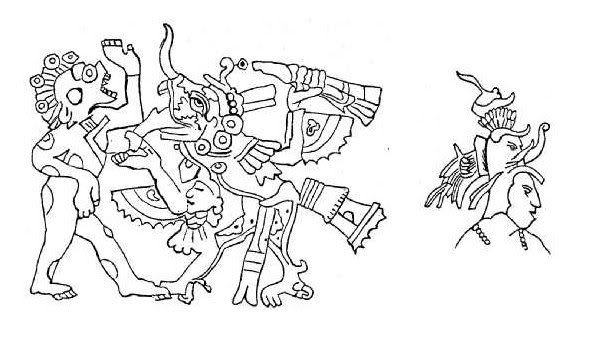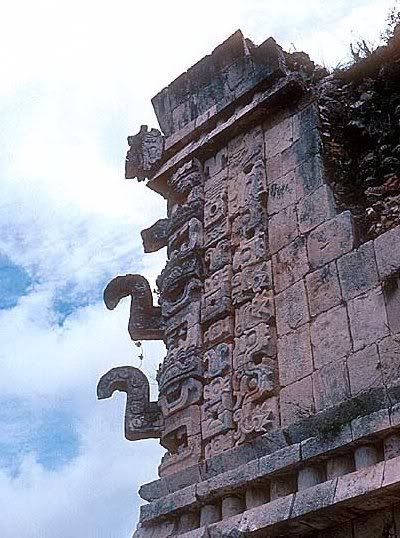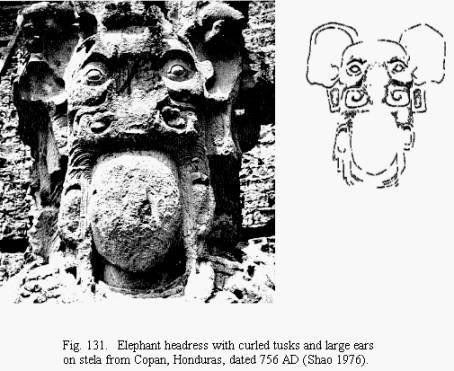|
|
Post by dantheman9758 on Apr 3, 2007 1:44:08 GMT
And once again i find out AFTER i posted that somebody has already touched on this subject.... anyways glad to see that somebody tried to contact this buffoon.
|
|
|
|
Post by another specialist on Apr 3, 2007 7:12:47 GMT
No problem dantheman9758 we all do it from time to time creating a thread on a subject we believe is new and find out later it does exist.
|
|
|
|
Post by dantheman9758 on Apr 3, 2007 22:59:56 GMT
 Woolly mammoth on the right - 6' human middle - American mastodon on the left  Skeleton used for reference  Full detail made with grizzly bear hair textures |
|
|
|
Post by Carlos on Apr 4, 2007 12:25:44 GMT
Dantheman, your Mastodon looks simply real. I'm really interested to hear from you (well, to read, rather  ) about the controversy "hairy vs hairless" Mastodon. I've seen both ways of representing that particular species ( Mammut americanum), including this very thread. I don't know if there is any material proof (like the well known Woolly Mammoth frozen carcasses), It was a temperate to cold (but no glacial cold) climate species, so somehow it seems right for it to be hairy. But I really don't know. What do you think? |
|
|
|
Post by dantheman9758 on Apr 4, 2007 13:18:29 GMT
As far as i know there is NO material proof for the American mastodon being hairy or hairless, and all we can do is speculate.
It is odd that scientists have made it hairy for nearly as long as it's recognition as a species because no "large" animal today, or at the time this animals discovery, has ever been hairy. (save for the Sumatran rhino, but it is sparsely haired at best and probably unknown to these old scientists who started this hairy mastodon trend)
I think they guessed well though!, because of course all of our large animals today only live in south Asia and Africa, and the areas that these animals live rarely suffers from freezing winters and snow. The American mastodon lived in the much colder continent of North America, and during the ice age, (on the eastern seaboard) it was found as far north as the state of Ohio, which was at the tip of glaciation. This indicates to me that the mastodon lived in a climate that is much like Alaska is today. I have trouble visualizing a non-woolly mastodon in areas with climates this harsh. But I do believe that the ones living farther south could have been sparsely haired, or even hairless. A thick woolly coat is bad for a large animal that tries to maintain a cool body temperature during hot summers so i doubt the mastodons living in Florida had the same thickness of hair!
I would show you this mastodon hairless, but because i used an African elephant to mold the body, the skin is deep and wrinkly and it doesn't look correct, a real mastodon would NOT have had an African elephants texture of wrinkly skin, because the wrinkles are an adaptation to cooling the body temperature and i doubt a mastodon would want that in Pleistocene America!
|
|
|
|
Post by Carlos on Apr 7, 2007 11:34:17 GMT
Thanks, Dan, for your quick reply, and my apologies for my delying my own (It's Easter in Seville, and there are great celebrations here).
Yes, I quite agree with you. It's difficult to imagine a hairless beast of that size in a very cold climate. Of course the reverse happens to the southern populations, like the ones in Florida.
If not hairy, they probably had a thick fat layer under the skin. At least the northernmost populations.
Another possibility, they not being silica-rich grass eaters, is that those northern populations made North-South migrations every year.
I rather imagine them like the Paleoloxodon antiquus/Mammuthus primigenius pair in the Ice Age Europe. The first a "standard" hairless elephant in the more temperate glacial refugia in southern Europe and the hairy second in its own glacial steppe ecosystem (the so called Mammoth Steppe). The same occurred among rhinoceroses.
|
|
|
|
Post by another specialist on Apr 8, 2007 19:16:32 GMT
dantheman9758 thanks for showing your creations - great work mate
|
|
|
|
Post by another specialist on Jun 8, 2008 9:23:20 GMT
Elephants Revisited: Many BoM critics first claim that the mention of elephants in the BoM is a laughable gaffe. When they are shown evidence for elephants in the Americas, they invariably claim it depicts nothing more than prehistoric mammoths. Click here to see pictures of mammoths and compare. This Native American pipe, is made of a light-colored sandstone, and contained evidence of grease, resin and smoke. It definitely lacks the characteristic tusks and shoulders of a mammoth. It was taken from a burial mound near an old bed of the Mississippi by the Reverend Dr. Blumer on March 2, 1880  Native American Elephant Pipe found near the Mississippi River in 1880  Carvings depicting Elephant headresses worn by Mayans at Palenque, Mexico circa 600 A.D.  Pre-Columbian Indian Burial Mound in Grant County, Wisconsin is elephant shaped. (Smithsonian Report, 1872)  Elephant Figures on ancient Mayan ruins, circa 500 AD Chichen Itza, Mexico www.the-book-of-mormon.com/photos-page3.html |
|
|
|
Post by another specialist on Jun 8, 2008 14:32:45 GMT
 Elephants in the New World? The critics point out the fact that "everyone knows" there are no elephants in the Americas... a fact that Joseph Smith should have known as well. So why would he go out on a limb and mention elephants in the Book of Mormon? Perhaps because contrary to the accepted conventional wisdom, there were small pockets of elephant-like animals (surviving Mammoths, perhaps) in the Americas? This photograph shows an interesting Mayan elephant-motif headress being worn by a human carved into a stone stela at Copan, Honduras. The carvings have been dated to approximately 756 AD. www.the-book-of-mormon.com/photos-page2.html |
|
|
|
Post by another specialist on Jun 15, 2008 10:43:57 GMT
 Annotated Bibliography of Quaternary Vertebrates of Northern North America By C.R. Harington |
|
Deleted
Deleted Member
Posts: 0
|
Post by Deleted on Mar 23, 2010 10:04:34 GMT
American Mastodon( Mammut americanum) I thought we might have a thread especially for Mammut americanum, but it doesn't seem so.  So I post the picture here.:  source: 'Proboscidea : a monograph of the discovery, evolution, migration and extinction of the mastodonts and elephants of the world / by Henry Fairfield Osborn ; edited by Mabel Rice Percy. New York: Published on the J. Pierpont Morgan Fund by the trustees of the American Museum of Natural History :1936-1942' www.biodiversitylibrary.org
|
|
|
|
Post by surroundx on Sept 9, 2012 7:17:35 GMT
|
|
|
|
Post by surroundx on Jan 31, 2015 6:40:24 GMT
Froese, Duane. (2014). The curious case of the Arctic mastodons. PNAS 111(52): 18405-18406. [ Abstract] |
|
|
|
Post by surroundx on Sept 21, 2015 12:32:15 GMT
|
|
|
|
Post by koeiyabe on Dec 13, 2015 1:13:02 GMT
"The Earth Extinct Fauna (in Japanese)" by Tadaaki Imaizumi (1986)  |
|
|
|
Post by surroundx on Jan 26, 2016 4:12:09 GMT
|
|
|
|
Post by surroundx on Mar 18, 2016 13:02:52 GMT
Pérez-Crespo, Víctor A., Prado, José L., Alberdi, Maria T., Arroyo-Cabrales, Joaquín and Johnson, Eileen. (2016). Diet and Habitat for Six American Pleistocene Proboscidean Species Using Carbon and Oxygen Stable Isotopes. Ameghiniana 53(1): 39-51. [ Abstract] |
|
|
|
Post by surroundx on Nov 28, 2017 11:42:01 GMT
Green, Jeremy L., DeSantis, Larisa, R. G. and Smith, Gregory James. (2017). Regional variation in the browsing diet of Pleistocene Mammut americanum (Mammalia, Proboscidea) as recorded by dental microwear textures. Palaeogeography, Palaeoclimatology, Palaeoecology 487: 59-70. [ Abstract] |
|
|
|
Post by surroundx on Nov 28, 2017 12:25:51 GMT
Claesson, Stefan et al. (2017). The contribution of Late Pleistocene megafauna finds to submerged archaeology and the interpretation of ancient coastal landscapes. Journal of Archaeological Science: Reports 15: 290-298. [ Abstract] |
|
|
|
Post by surroundx on Mar 3, 2018 2:35:15 GMT
|
|